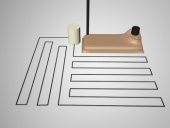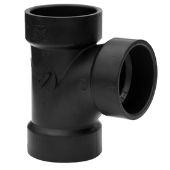
 5
5




Weeds are just plants with enough surplus will to live to withstand normal levels of gardening!--Alexandra Petri

 2
2




How Permies works: https://permies.com/wiki/34193/permies-works-links-threads
My projects on Skye: The tree field, Growing and landracing, perennial polycultures, "Don't dream it - be it! "
 1
1












 3
3




Weeds are just plants with enough surplus will to live to withstand normal levels of gardening!--Alexandra Petri




Mk Neal wrote:I think you should try to replicate the watering-can video in real life before basing your aquaponics system on this idea.
 6
6




 1
1








John Rosseau wrote:Sadly I don't think that the watering can video is legitimate. I'm pretty sure the video's creator has employed some video editing tricks and/or hidden pumps.
:/













 5
5




How Permies works: https://permies.com/wiki/34193/permies-works-links-threads
My projects on Skye: The tree field, Growing and landracing, perennial polycultures, "Don't dream it - be it! "




C. Letellier wrote:Now the thing you are missing is the temperature change per day the fish will stand without harm. It is something like 1 degree per day. The fish will have some temperature range they can live in. Usually about 15 to 30 degree range. But if you move the temperature by that much in a day the fish will be harmed or killed. The amount of change you can have in any given day is a tiny fraction of that unless you want to make the fish sick or kill them. Of course even if you could swing the full temperature range you are dealing with a really complicated system for it to work and the amount of fluid you can move passively is really small. Likely not enough to support a single gold fish. So the answer to your question I am going to say is NO.
Now a no moving parts system is possible under very special conditions. If you had at least 3X the fall vs your lift height of a constantly running water with enough flow volume it could be done. Use the falling water to power a Trompe pump to make air pressure so no moving parts there. Run that thru an airline to an airlift pump and you have a system that will run with no moving parts. The catch is the amount of height and large constant flow needed to make it work. If you want to lift say 10 feet then the air pump will need to be at least 15 feet deep. To achieve the air pressure needed to drive that the trompe pump will need roughly 30 feet of fall.
So far as I know this is the only no moving parts system that will allow true aquaponics.
Now there is a neat you tube video discussing why an airlift pump would be a better answer for aquaponics. But they are still driving it electrically. And the ways to make air pressure have more options but they are all complex in some form.
Right now low voltage magnetic drive pumps are the other pump choice I would be looking at. The one I got for the solar collector project has no external moving parts. The rotor for the pump is the armature and it is all inside the pump. No seals to fail. It is a neat little pump with very little to go wrong. And being DC I can run it off solar, off batteries or off AC power with very little trouble trading between them.
Now your other option is eliminate pumping totally, grow plants in the top half and fish in the lower half and fence them away from each other. There are a number of you tube videos on this type of system also. Most of these systems are bigger tanks though so one end of the tank can be devoted to letting the fish surface and feed etc.
 1
1




Nancy Reading wrote:I like the human powered pump. I could imagine it linked to a bicycle to make it more ergonomic. Our local weavers have set up a bicycle powered loom which is quite effective see
for what can be done with a little ingenuity (you don't have to watch the whole video to get an idea).
Alternatively something similar could be like a perpetual bicycle pump pushing air around, maybe into a pressure vessel (balloon?) to store air and extend the bubbling. That might be trickier, since air is less easy to contain.
Not sure about the watering cans, looks impressive but I'm sceptical as well that it actually works for more than a few seconds. If you get it to work let us know!

 3
3




Failure is a sign of activity and learning. It had nothing to do with under achievement
I never want to have a team member who has never failed - They are not doing!! 👍
 2
2




New location. Zone 6b, acid soil, 30+ inches of water per year.
https://growingmodernlandraces.thinkific.com/?ref=b1de16
Growingmodernlandraces.com affiliate
 5
5




 4
4




 4
4




 2
2




Home: SW Colorado, 38N Latitude, 2100m elevation, Zone 5b/6a
Ask Me About: Keyline in Broadacre, Pasture restoration, Electric Vehicles, Solar, Computers/Networking/Automation
 3
3








 1
1




New location. Zone 6b, acid soil, 30+ inches of water per year.
https://growingmodernlandraces.thinkific.com/?ref=b1de16
Growingmodernlandraces.com affiliate




Home and Small Farm Hydropoinics: https://hydroponics.snowcron.com
 2
2









|
It's a beautiful day in the tiny ad neighborhood
The new kickstarter is now live!
https://www.kickstarter.com/projects/paulwheaton/garden-cards
|








